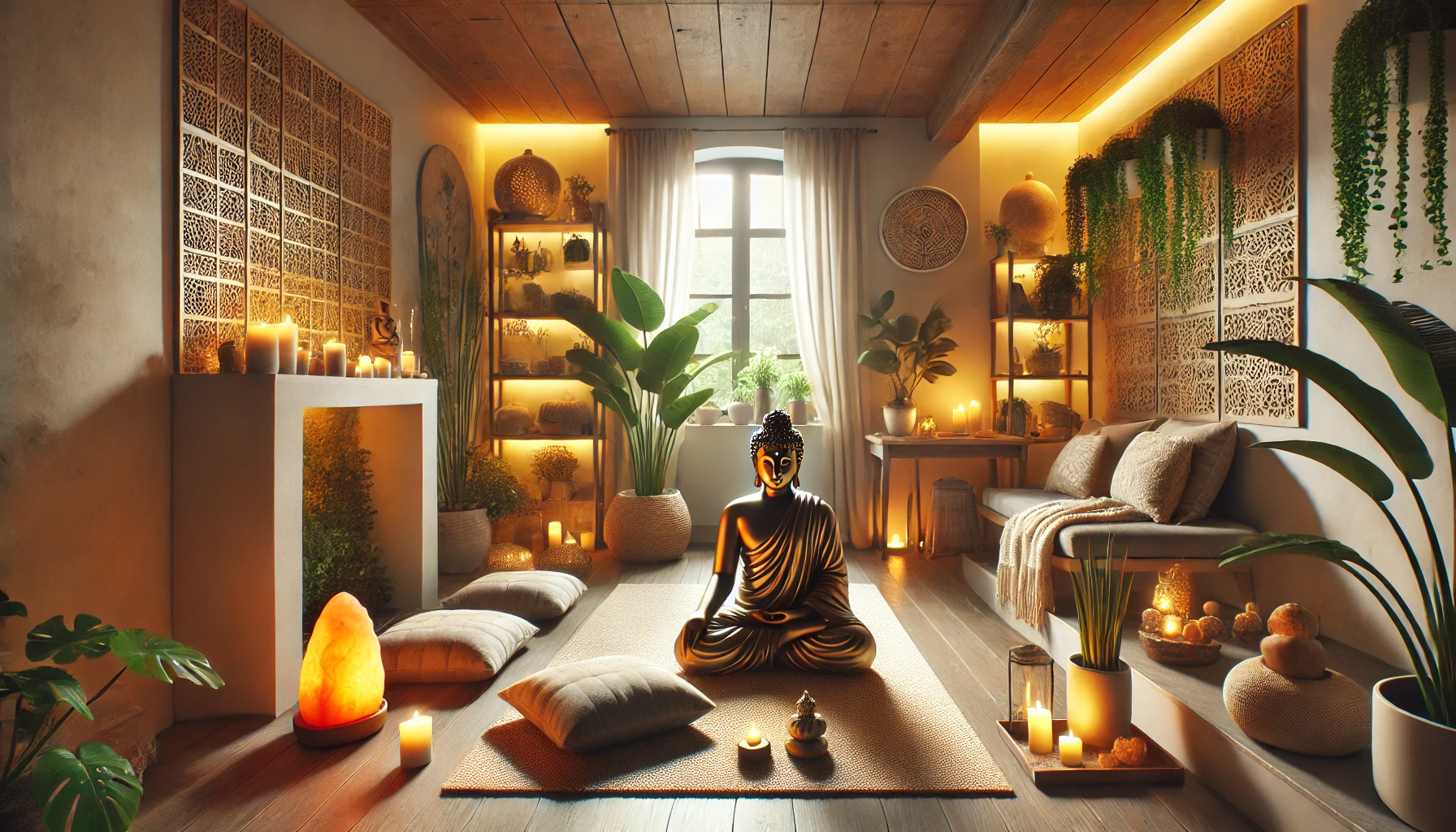How to Use Feng Shui to Cultivate Inner Peace and Mindfulness in Your Home
A home designed for inner peace and mindfulness provides a retreat from external stress and fosters mental clarity. Feng Shui principles can help create a tranquil environment by balancing energy, reducing distractions, and incorporating elements that promote relaxation and self-awareness. By optimizing furniture arrangement, using calming colors, and integrating mindful decor, you can transform your home into a sanctuary for peace and mindfulness.
1. Activate the Mindfulness and Spiritual Growth Area (Northeast Sector)
In Feng Shui, the northeast area of your home represents wisdom, mindfulness, and spiritual growth. Strengthening this space enhances inner peace and clarity.
- Keep the northeast section free of clutter, ensuring a smooth energy flow
- Use earth elements, such as stone, crystals, or ceramics, to promote stability and mindfulness
- Decorate with soft blue, beige, or white tones, reinforcing serenity and wisdom
- Display spiritual symbols, meditation cushions, or a small altar, creating a sacred space
2. Declutter to Create Mental and Emotional Clarity
A cluttered home can lead to mental overload and stress.
- Remove unnecessary objects, paperwork, or digital distractions, preventing overstimulation
- Keep surfaces clean and minimal, promoting a sense of openness and calm
- Organize books, personal items, and relaxation tools neatly, ensuring easy access
- Regularly refresh your space by deep cleaning and rearranging decor
3. Use Calming Colors to Support Mindfulness
Colors influence emotions and can help create a peaceful atmosphere.
- Soft blues and greens – Promote relaxation, reflection, and mental clarity
- Earthy neutrals (beige, light brown, soft white) – Reinforce stability and grounding
- Lavender and pastel pinks – Encourage self-awareness, inner calm, and healing
- Avoid bright reds, neon colors, or heavy contrasts, which can overstimulate the mind
4. Arrange Furniture for a Flowing and Balanced Energy
The way furniture is positioned affects relaxation and mindfulness.
- Arrange seating to encourage openness and a sense of balance
- Keep walkways clear, allowing Chi (energy) to flow freely
- Use rounded furniture and soft materials, preventing sharp energy disruptions
- Ensure that bedrooms, meditation areas, and relaxation spaces are private and calming
5. Incorporate Natural Elements for Inner Peace
Nature-based decor fosters a sense of calm and connection to the present moment.
- Add indoor plants, such as peace lilies, lavender, or bamboo, improving air quality and relaxation
- Use wooden furniture and organic fabrics, reinforcing warmth and mindfulness
- Incorporate a small indoor fountain or essential oil diffuser, promoting relaxation
- Display nature-inspired artwork, such as peaceful landscapes or Zen gardens, reinforcing tranquility
6. Optimize Lighting for a Tranquil Ambiance
Proper lighting plays a crucial role in emotional balance and mindfulness.
- Maximize natural light, positioning relaxation spaces near windows
- Use soft, dimmable lighting in meditation and quiet areas, creating a soothing atmosphere
- Install candles, Himalayan salt lamps, or string lights, adding warmth and peace
- Avoid harsh fluorescent lighting, which can create stress and tension
7. Introduce Sound and Music for Mindful Relaxation
Sound influences emotional states and supports meditation practices.
- Play soft instrumental music, Tibetan singing bowls, or nature sounds, promoting deep relaxation
- Use wind chimes near doors or windows, ensuring a gentle energy flow
- Incorporate a small singing bowl or mindfulness bell, signaling moments of reflection
- Reduce background noise by using rugs, curtains, or noise-reducing materials
8. Use Aromatherapy to Encourage Presence and Relaxation
Scents can enhance mindfulness and deepen relaxation.
- Diffuse lavender, frankincense, or sandalwood essential oils, encouraging calmness and focus
- Use rose, jasmine, or chamomile scents, promoting emotional balance
- Keep fresh herbs or incense sticks in meditation areas, reinforcing mindfulness practices
- Avoid synthetic air fresheners, opting for natural, light scents
9. Create a Meditation or Reflection Space
A dedicated area for mindfulness helps reinforce daily self-awareness.
- Set up a quiet corner with a meditation cushion, soft blanket, and natural light
- Keep a gratitude journal, mindfulness books, or a vision board nearby
- Display symbols of peace and self-care, such as a Buddha statue or affirmation cards
- Use soft textures, warm lighting, and natural elements, making the space inviting
10. Design a Zen Bathroom for Relaxation and Renewal
A peaceful bathroom can serve as a retreat for mindful self-care rituals.
- Keep the bathroom clean, organized, and clutter-free, promoting relaxation
- Use soft towels, bath salts, and calming essential oils, enhancing the spa-like experience
- Install candles or warm lighting, creating a meditative atmosphere
- Avoid placing mirrors directly opposite the shower or bathtub, keeping energy restful
11. Maintain a Mindful and Restorative Bedroom
A well-balanced bedroom supports emotional peace and deep rest.
- Position the bed against a solid wall, reinforcing security and relaxation
- Use plush bedding in calming colors, creating a peaceful sleep environment
- Keep electronics and bright screens out of the bedroom, reducing overstimulation
- Avoid placing mirrors facing the bed, which can create restlessness
12. Refresh and Maintain a Peaceful Energy Flow
Keeping energy fresh ensures ongoing inner peace and mindfulness.
- Smudge with sage, palo santo, or incense, removing stagnant energy
- Open windows frequently, allowing fresh air and positive Chi to enter
- Keep a bowl of sea salt in common areas, replacing it weekly to absorb negativity
- Rearrange decor, plants, or self-care elements periodically, keeping the energy dynamic and inspiring
Final Thoughts: Creating a Feng Shui Home for Inner Peace and Mindfulness
By applying Feng Shui principles, you can design a home that nurtures relaxation, mindfulness, and emotional balance. A clutter-free, well-lit, and thoughtfully arranged space fosters deep self-awareness and inner calm.
A home filled with mindful energy encourages reflection, gratitude, and a sense of harmony. With mindful design choices and daily meditation rituals, you can cultivate an environment where inner peace naturally flourishes.
